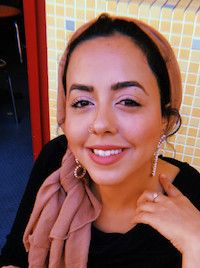Minority, Low-Income Students Perceive Barriers to Dermatology Residency
Medical students’ perceptions of the barriers to applying for a dermatology residency vary based on race, ethnicity, and socioeconomic background.

Yssra S. Soliman, BA
This time last year, students at 35 medical schools were asked to complete a survey about the factors most important to applying to a dermatology residency program. The perceived barriers to focusing in dermatology differed by the students’ race, ethnicity, and socioeconomic backgrounds.
In particular, minority and low-income students rated the lack of diversity in the dermatology field, residency programs’ negative perceptions of minority students, socioeconomic barriers, and poor access to mentors as important factors.
“As the US population becomes increasingly diverse, the specialty of dermatology has not followed this trend; it is the least diverse medical field, after orthopedics,” wrote Yssra S. Soliman, BA, a medical student at the Albert Einstein College of Medicine of Yeshiva University, and colleagues.
The survey was completed by medical students from 28 of the 35 medical schools (school response rate, 80%) and by 155 of the 242 students who accessed the survey (student response rate, 64%). Participants rated survey items on a Likert scale, from 1-5—not important to very important.
Minority students—defined as those who were nonwhite—accounted for 59.1% of respondents. Low-income students—those with household income below $40,000 per year—accounted for 16.8% of participants.
Overall, the most highly rated concerns (mean [SD] Likert score) were the US Medical Licensing Examination Step 1 (4.91 [.35]); clinical grades (4.70 [.59]); and risk of not matching (4.53 [.76]).
Among low-income and minority students, a lack of diversity in the field of dermatology was a significant factor. The highest scores for this item were among Hispanic/Spanish/Latino students (4.50 [.65]) and students with household incomes between $20,000 and $40,000 (4.41 [.87]). For comparison, white students rated this factor at 3.25 (1.36) and students in the highest income bracket (>$100,000) rated it 3.13 (1.38).
Residency programs’ negative perception of minority students was rated highly by students who selected “other” race (4.17 [1.17]), African Americans (3.96 [1.16]), Hispanic/Spanish/Latinos (4.00 [1.08]), and students with household incomes between $20,000 and $40,0000 (4.19 [1.17]).
Socioeconomic factors, such as a lack of loan forgiveness, were rated highly by students of “other” race (4.50 [.84]) and those with household incomes less than $20,000 (4.78 [.44]). As might be expected, the mean rating tended to decrease with increasing household income.
Students with household incomes less than $20,000 (4.89 [.33]) and Hispanic/Spanish/Latino students (4.79 [.43]) reported the highest scores for poor accessibility to mentors. Those in the $20,000 to $40,000 income category also rated mentorship highly, at 4.71 (.59).
The authors noted that the survey may not represent all medical students in the US and that not all minority groups are underrepresented in the field of medicine.
“Asians were included as minorities because 50.0% of respondents were born outside of the United States (n = 21), and 37.5% (n = 15) had a first language other than English,” wrote the authors.
The investigators highlighted the need for active recruiting of all students and for mentorship opportunities. They added recommendations for supporting minority students’ exposure to dermatology.
“Efforts should be made to increase minority students’ exposure to dermatology by incorporating it into the curriculum, providing research opportunities, and reducing the cost of 'visiting electives' by providing stipends,” wrote the authors.
The research letter, “Understanding Perceived Barriers of Minority Medical Students Pursuing a Career in Dermatology,” was published in JAMA Dermatology.